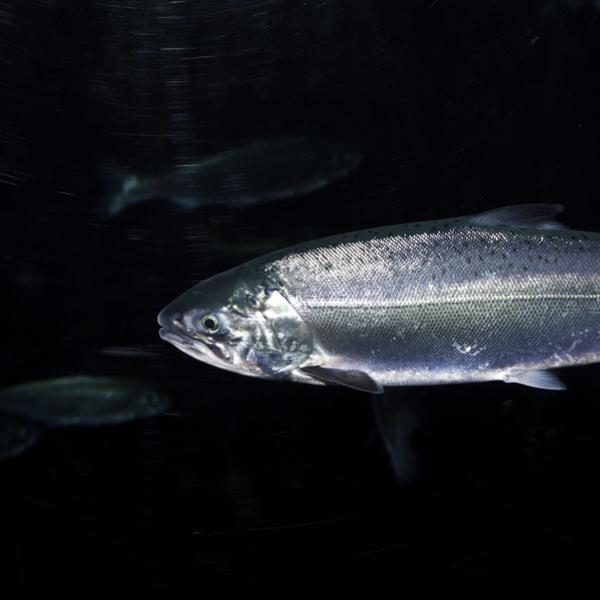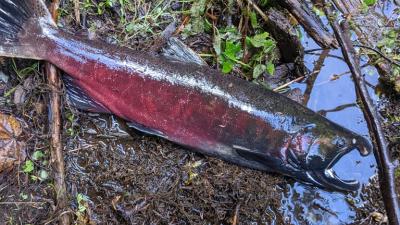The name “coho” comes from the Halkomelem language spoken by Indigenous people in the Pacific Northwest. Coho salmon (Oncorhynchus kisutch) have silver sides and dark blue or greenish backs. They are also known as “silver salmon” due to their bright silver sides. These fish are a species of anadromous fish in the salmonid family, found primarily in the Pacific Ocean and its tributaries.

Coho Salmon Fast Facts
- As Coho salmon approach spawning, their bodies turn a bright red, especially the males, and their jaws develop a hooked snout.
- Coho salmon can range between 8 to 12 pounds in optimal conditions and between 24 to 30 inches long
- They can leap up to 6 feet (1.8 meters) high when navigating obstacles in rivers.
Anadromy describes the lifecycle where fish are born in freshwater, migrate to the ocean to grow and mature and then return to freshwater to reproduce, or spawn. Learning about anadromous fish can help show the important interconnections between marine and freshwater ecosystems.
Their life cycle begins when female coho salmon lay their eggs in gravel beds in freshwater streams. The eggs are fertilized and covered with gravel. The eggs hatch into alevins, which remain in the gravel, feeding off their yolk sack. They then emerge as young fish, or fry, and begin feeding on plankton and insects. The fry develop into parr, characterized by newly formed vertical bars and spots for camouflage and remain hidden in freshwater for about a year before migrating to the ocean. The adult salmon spend about 1-3 years in the ocean, feeding on fish, squid and crustaceans before returning to their natal streams to spawn. Coho salmon typically die after returning to spawn, a process called semelparity (spawning only once).

Coho salmon play a key ecological role in the ocean and inland freshwater streams. Coho salmon are important predators of smaller fish and invertebrates. They are also prey for larger animals, including bears, eagles and orcas. Because they die in inland streams after spawning, Coho salmon transport marine nutrients like nitrogen into nutrient-limited terrestrial ecosystems. Without the transfer of marine-derived nutrients onto land, terrestrial plant and animal life could decline in those areas.

Unfortunately, coho populations in the central California coast have declined dramatically since the early 20th century as a result of human activity. As such, they are listed as endangered under the federal Endangered Species Act. Anadromous fish like coho face many challenges on the road to recovery, including dams that restrict upstream migration, low summer flows due to water diversions, the loss of instream habitat complexity and richness, and pollution or sedimentation as a result of urbanization. Midpen’s conservation efforts to accelerate coho recovery include instream habitat restoration, sediment reduction, improvement of watershed function and the protection of open space lands needed for these fish to thrive.

